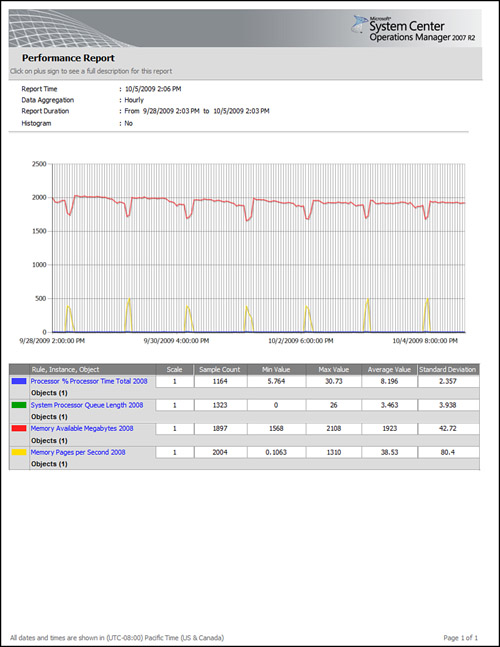The Operations Manager 2007 R2
monitoring is organized into management packs (MPs) for ease of
installation and versioning. The Operations Manager 2007 R2 includes
some of the best management packs for monitoring and maintaining Windows
Server 2008 R2. These include the following:
Windows Server
Operating System MPs
Active Directory
Server MPs
Windows Cluster Management MPs
Microsoft Windows DNS Server
MPs
Microsoft Windows DHCP Server MPs
Microsoft Windows Group Policy MPs
Microsoft Windows Hyper-V MPs
Windows Server Internet
Information Services MPs
Windows Server Network Load Balancing MPs
Windows Server Print Server MPs
Windows Terminal Services MPs
Each of the preceding
categories includes several different management packs to support
monitoring, discovery, and libraries. These management packs were
developed by the product groups and include deep knowledge about the
product.
The features of the management
packs for the following major systems are as follows:
Windows Operating System Management Pack— Monitors and alerts all the major elements that
Windows Server 2008 R2 runs on, including processor, memory, network,
disk, and event logs. It gathers performance metrics and alerts on
thresholds, as well as critical events.
Active Directory Management Pack— Monitors and alerts on Active Directory key metrics,
such as replication latency, domain controller response times, and
critical events. The management pack generates synthetic transactions to
test the response time of the PDC, LDAP, and other domain services.
DNS
Management Pack— Monitors and alerts on DNS
servers for resolution failures and latency as well as critical events.
IIS Management Pack— Monitors and alerts on IIS services, application
pools, performance, and critical events.
On
all these elements, administrators can generate Availability reports to
ensure that the servers and systems are meeting the service-level
agreements (SLAs) set by the organization.
The management pack
includes a comprehensive set of reports that are specific to Windows
Server 2008 R2. These include reports on performance, availability,
events, and even configuration for the various Windows Server 2008 R2
roles. These reports can be generated ad hoc, scheduled for email
delivery on a regular basis, or even generated into web pages for portal
viewing. Figure 1 shows a Performance report for a
server. The report shows that processor utilization is low and that
memory utilization is steady, with regular skips of activity in the
pages per sec, which correspond to available memory dips.

This kind of summary
Performance report is invaluable to reporting on the Windows Server 2008
R2 infrastructure and really ties together the low-level technical
monitoring into a high-level view that support personnel can use.